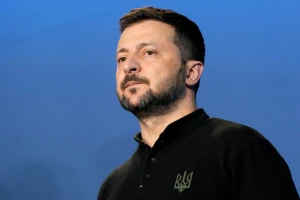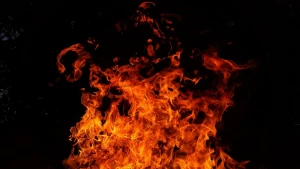
Russia's military recruitment potential is 1.5 million people, but no one wants to be cannon fodder - Serhiy Zgurets
Russia cannot form a mechanism for selection into the army, no one wants to go to war, because everyone knows that it is just producing corpses
Anti-missile drones from Britain for the Armed Forces
The Ukrainian Naval Forces will finally receive new models of unmanned vehicles for missions in the Black Sea. Britain's Ministry of Defense reported that it is handing over underwater drones to Ukraine to search for mines, which the Russian Federation is using to block the waters of the Black Sea. The training of operators from the Armed Forces has already begun, and it is about 6 underwater vehicles, of which 3 will be handed over to the British Navy, and three more will be ordered from the manufacturer. The drone is called Remus-100, it weighs 37 kg, it has fairly moderate dimensions - up to two meters and can dive to a depth of 100 meters and search for mines using sonar for 10 hours. It is not designed to search for submarines, although I think it is necessary to think further about how to detect enemy boats that the aggressor uses to launch cruise missiles from the Black Sea and destroy them.
Number of Russian troops in Ukraine and their deployment along front
According to Vadym Skibitsky, a representative of the General Staff, the number of occupying troops on our land is now 160,000 military personnel, excluding the Russian Guard. They are scattered within 110 battalion tactical groups (BTG).
The grouping of troops in the area of Kharkiv, Izyum, and the Slovyansk direction is about 20 BTG. The largest number of troops at the front is on the line from Siversk to Maryinka. It covers the line Siversk — Soledar — Bakhmut and the most difficult section in the Donetsk direction Avdiyivka — Maryinka. About 60 BTGs, almost half of the Russian troops, are stationed here. Such an accumulation of troops is a sign of the priority of the task for the Rashists - to reach the border of the Donetsk region. Finally, the South, where we keep enemy groups on the right bank of the Dnieper under fire control (it is about 150 x 60 km) - there are 30 BTGs in Kherson Oblast and Zaporizhzhia. We understand that these are not the groups that were in the very beginning.
Is Russia ready for a long war?
The research of the British center RUSI - the institute for the study of defense and security on the possibility of Russia's long-term war is meaningful and thorough. They tried to convey as accurately as possible all aspects related to political, material and technical aspects and the army. The first aspect is political. They point out that an autocratic society is the most stable to conduct prolonged military operations. This is true: the political system of the Russian Federation can hold on for a long time in the face of prolonged hostilities, but we must understand that the Kremlin has separate towers. On the one hand, these are special services - SZR. There are also FSB, GUR, Ministry of Defense. Each of them assesses the situation in its own way. As soon as there is a big loss in the framework of the war, it should not be ruled out that one of the towers can organize an internal coup. I agree that an autocratic society is more resistant to prolonged wars, but on the other hand, an internal coup should not be ruled out.
The next point concerns the defense-industrial complex. The study probably does not say how well the OPC will withstand prolonged action. They say that everything depends on the duration of the battles. If the military-political leadership of the Russian Federation wants to quickly conduct combat operations and force the army to go on the attack and win in the short term, then this cannot be ensured with the help of military equipment. If there will be a certain delay in the process, when Russia tries to drag out the war until the spring and summer of next year, then the OPC will be able to try to cope, but at the expense of import substitution and the ability to buy something through third hands. It is important to emphasize that RUSI believes that if China decides to help Russia's defense industry, it can cope. As of now, China has distanced itself from this proposal and is trying to be as neutral as possible.
The third point is personnel. This is the extent to which Russia will be able to build up reserves - to reinforce its troops and groups with trained personnel. RUSI says that it is necessary to understand that the potential that the Russian Federation can attract is 1.6 million people. These are reservists, military personnel who are graduating, military personnel who are undergoing training in institutions that train non-commissioned officers. The potential is great, but we see management lapses in recruiting this staff. It was not possible to form the combat army system as desired. Ex-servicemen do not want to join the army, because they know what the Russian army is like, and they understand that the Russian Federation fights by throwing meat at them. Nobody wants to be him.
It is more profitable for us to push out the Russian Federation as quickly as possible and not give them the opportunity to reanimate. Only in this case can there be a victory, because otherwise Russia will try to increase its human staff as much as possible, make the defense industry work in wartime mode, and adapt as much as possible so that some components can be produced independently, some imported from third countries. For the Russian Federation, the greatest opportunities are associated with those countries that have not joined the sanctions regime and are in conditionally neutral status. These are Latin America, the Middle East, and Asia. Civil technologies for missiles, aviation and high-precision weapons can also be purchased there.
- News














































